Kapok tree, Red silk-cotton tree
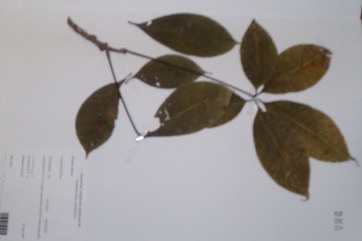
A tropical plant. It grows in tropical monsoonal rainforest. It suits humid locations. It requires an open sunny position. It will grows on most soils. It can grow in limestone areas. It is drought and frost tender. Trees must have a temperature above 13°C. In Nepal plants grow to 1200 m altitude. In the Indian Himalayas it grows between 1,200-1,400 m above sea level. They are found at low altitudes throughout the Philippines. In India they grow in all deciduous forests. It can grow in arid places. It suits hardiness zones 10-12. In Sichuan and Yunnan.
Also known as:
Boichu, Bombax, Booruga, Boorunga, Bouro, Bula, Buroh, Doak-ngew, Edel daru, Edelsong, Gao rung, Gon rung, Guan niu, Illavam, Kaanti-senbal, Kadung, Kantakadruma, Kantesavar, Kate savar, Katesawar, Kawl-tung-peng, Kempu-booruga, Kempuburuga, Koki, Kroik, Leptan, Letpan, Mai-nio, Malabulak, Moc mien, Mu mian, Mulilavu, Mullelava, Mullila-pula, Mullilavau, Mullilavu, Mullubooruga, Mu mian yang, Neibie, Ngiew, Ngiu deng, Ngiu pa, Nglo, Ntoo yaj huab, Nuoliu, Pagun, Pan-ya, Panchu, Pemagesar, Pemguyser, Phakong, Pharkong, Pohon kapuk merah, Poola, Pula-maram, Pulai, Rakta-pushpa, Red Silk Cotton tree, Ro-ka, Roktosimul, Salmali, Samar, Sanar, Saur, Savar, Savri, Sawar, Semal, Semale, Sémul, Senur, Shaimbal, Shembal, Shemolo, Shevari, Shevri, Shimla, Shimul cotton, Simal, Simalo, Simalu, Simbal, Simla, Simlo, Simolu, Simuli, Singi, Syamling, Yi ka bu duo si
Synonyms
- Bombax aculeatum L.
- Bombax ceiba var. leiocarpum Robyns
- Bombax malabaricum DC.
- Bombax heptaphyllum Cav.
- Salmalia malabarica (DC.) Schott & Endl.
- Gossampinus malabarica (DC.) Merrill
Edible Portion
- Roots, Leaves, Flowers, Fruit, Seeds, Seeds - oil, Gum
Where does Kapok tree grow?
Found in: Africa, Andamans, Asia, Australia, Bangladesh, Bhutan, Cambodia, Central America, China, East Africa, East Timor, Hawaii, Himalayas, India, Indochina, Indonesia, Iraq, Laos, Malaysia, Myanmar, Nepal, Northeastern India, NW India, Pacific, Pakistan, Papua New Guinea, PNG, Philippines, SE Asia, Sikkim, Solomon Islands, South America, Sri Lanka, Tanzania, Thailand, Timor-Leste, United States, Vietnam, West Indies, West Timor
Notes: There are about 8 Bombax species. It was previously put in the family Bombacaceae.
Status: It is not known if it is used for food in Papua New Guinea. The fruit are only occasionally used. The flowers are sold in markets in Nepal.
Growing Kapok tree, Red silk-cotton tree
Cultivation: Plants can be grown from seed or cuttings. Seed germinate easily. Cuttings of half ripe wood are used. They can also be grown by layering.
Edible Uses: The taproot of young plants is peeled then roasted and eaten. Flowers are cooked as a vegetable or pickled. The flowers are dried and pounded and used for bread. They are also used in five flower tea. The young leaves are boiled with condiments then eaten. The unripe and ripe fruits are cooked as vegetables. The seeds yield an edible fatty oil. The mature roasted seeds are eaten. The buds, young pods and roots of seedling can be eaten cooked. The young bark is used as a famine food. It is crushed and added to flour.
Production: It is fast growing. The seeds contain 22-25% oil that is edible. In Sikkim seeds are available April to June.
Nutrition Info
per 100g edible portion| Edible Part | Energy (kcal) | Protein (g) | Iron (mg) | Vitamin A (ug) | Vitamin c (mg) | Zinc (mg) | % Water |
|---|---|---|---|---|---|---|---|
| Flower | - | 0.4 | - | - | - | - | 94.1 |
| Roots | - | - | - | - | - | - | |
| Leaves | - | - | - | - | - | - | |
| Fruit | - | - | - | - | - | - | |
| Seeds - oil | - | - | - | - | - | - | |
| Bark | - | - | - | - | - | - | |
| Gum | - | - | - | - | - | - |
Kapok tree, Red silk-cotton tree Photos

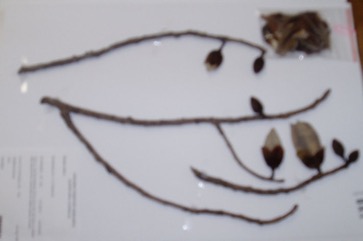
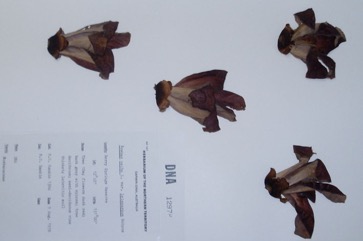
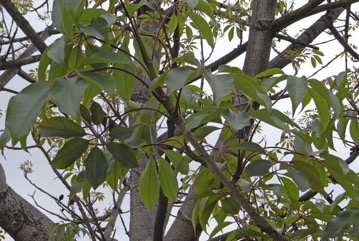
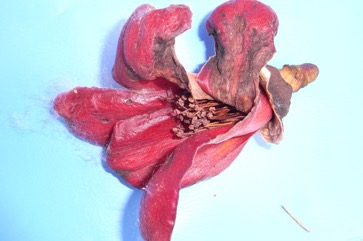
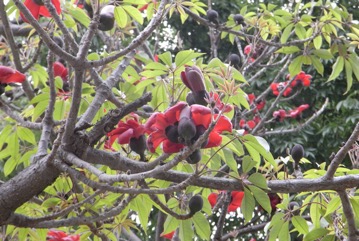
References
Abbasi, A. M., et al, 2013, Ethnobotanical appraisal and cultural values of medicinally important wild edible vegetables of Lesser Himalayas-Pakistan. Journal of Ethnobiology and Ethnomedicine 9:66
Abbasi, A. M., Khan, M & Zafar, M., 2013, Ethno-medicinal assessment of some selected wild edible fruits and vegetables of Lesser-Himalayas, Pakistan. Pak. J. Bot. 45 (SI):215-222 (As Bombax malabaricum)
Acharya K. P. and Acharya, R., 2010, Eating from the Wild: Indigenous knowledge on wild edible plants in Parroha VDC of Rupandehi District, Central Nepal. International Journal of Social Foresttry. 3(1):28-48
Ambasta, S.P. (Ed.), 2000, The Useful Plants of India. CSIR India. p 76
Aryal, K. P., et al, 2018, Diversity and use of wild and non-cultivated edible plants in the Western Himalaya. Journal of Ethnobiology and Ethnomedicine (2018) 14:10
Ashton, M. S., et al 1997, A Field Guide to the Common Trees and Shrubs of Sri Lanka. WHT Publications Ltd. pdf p 125
Azam, F. M. S., et al, 2014, Are Famine Food Plants Also Ethnomedicinal Plants? An Ethnomedicinal Appraisal of Famine Food Plants of Two Districts of Bangladesh. Evidence-Based Complementary and Alternative Medicine Volume 2014, Article ID 741712, 28 pages
Baishya, S. Kr., et al, 2013, Survey of Wild Edible Fruits of Dhubri District, Assam, India. Plant Archives Vol 13 (1): 155-158
Barwick, M., 2004, Tropical and Subtropical Trees. A Worldwide Encyclopedic Guide. Thames and Hudson p 55
Bircher, A. G. & Bircher, W. H., 2000, Encyclopedia of Fruit Trees and Edible Flowering Plants in Egypt and the Subtropics. AUC Press. p 61 (As Bombax malabaricum)
Bodkin, F., 1991, Encyclopedia Botanica. Cornstalk publishing, p 154
Bodkin, F., 1991, Encyclopedia Botanica. Cornstalk publishing, p 154 (As Bombax malabaricum)
Bohra, N., et al, 2017, Ethnobotany of wild edible plants traditionally used by the local people in the Ramnagar regions from Nainital District, Uttarakhand, India. Biolife 5(1): 12-19
Bole, P.V., & Yaghani, Y., 1985, Field Guide to the Common Trees of India. OUP p 101 (As Salmalia malabarica)
Brickell, C. (Ed.), 1999, The Royal Horticultural Society A-Z Encyclopedia of Garden Plants. Convent Garden Books. p 182
Brock, J., 1993, Native Plants of Northern Australia, Reed. p 98
Burkill, I.H., 1966, A Dictionary of the Economic Products of the Malay Peninsula. Ministry of Agriculture and Cooperatives, Kuala Lumpur, Malaysia. Vol 1 (A-H) p 348 (As Bombax malabaricum)
Cao, Y., et al, 2020, Ethnobotanical study on wild edible plants used by three trans-boundary ethnic groups in Jiangcheng County, Pu’er, Southwest China. Journal of Ethnobiology and Ethnomedicine (2020) 16:66
Cherikoff V. & Isaacs, J., The Bush Food Handbook. How to gather, grow, process and cook Australian Wild Foods. Ti Tree Press, Australia p 198
Chowdery, T., et al, 2014, Wild edible plants of Uttar Dinajpur District, West Bengal. Life Science Leaflets. 47:pp 20-36 http://lifesciencesleaflets.ning.com
Cooper, W. and Cooper, W., 2004, Fruits of the Australian Tropical Rainforest. Nokomis Editions, Victoria, Australia. p 92
Cowie, I, 2006, A Survey of Flora and vegetation of the proposed Jaco-Tutuala-Lore National Park. Timor-Lests (East Timor) www.territorystories.nt/gov.au p 45
Croft, J.R., in Henty, E.E., (Ed.), 1981, Handbooks of the Flora of Papua New Guinea, Melbourne University Press, p 5
Cundall, P., (ed.), 2004, Gardening Australia: flora: the gardener's bible. ABC Books. p 242
DARLINGTON & AMMAL, (As Bombax malabaricum)
Dangol, D. R., 2002, Economic uses of forest plant resources in western Chitwan, Nepal. Banko Janakari, 12(2): 56-64
Dangol, D. R. et al, 2017, Wild Edible Plants in Nepal. Proceedings of 2nd National Workshop on CUAOGR, 2017.
Dey, A. & Mukhererjee, A., 2015, Living and Survival Amidst Hunger: Wild Edible Botanicals as a Prime Forestt Productivity in the Rural Purulia District, West Bengal, India from Colonial to Present. Research Journal of Foresttry 9(3): 71-86
Dobriyal, M. J. R. & Dobriyal, R., 2014, Non Wood Forestt Produce an Option for Ethnic Food and Nutritional Security in India. Int. J. of Usuf. Mngt. 15(1):17-37
Eiadthong, W., et al, 2010, Management of the Emerald Triangle Protected Forestts Complex. Botanical Consultant Technical Report. p 47
Elliot, W.R., & Jones, D.L., 1982, Encyclopedia of Australian Plants suitable for cultivation. Vol 2. Lothian. p 333
Engel, D.H., & Phummai, S., 2000, A Field Guide to Tropical Plants of Asia. Timber Press. p 28
Etherington, K., & Imwold, D., (Eds), 2001, Botanica's Trees & Shrubs. The illustrated A-Z of over 8500 trees and shrubs. Random House, Australia. p 133
Ethnobotany of Karbis. Chapter 4 in p 103
Facciola, S., 1998, Cornucopia 2: a Source Book of Edible Plants. Kampong Publications, p 51 (As Salmalia malabarica)
French, B.R., 2010, Food Plants of Solomon Islands. A Compendium. Food Plants International Inc. p 300
GAMMIE (As Bombax malabaricum)
Gardner, S., et al, 2000, A Field Guide to Forestt Trees of Northern Thailand, Kobfai Publishing Project. p 73
GUPTA & KANODIA,
Havel, J.J., 1975, Forestt Botany, Volume 3 Part 2 Botanical taxonomy. Papua New Guinea Department of Forestts, p 178
Hearne, D.A., & Rance, S.J., 1975, Trees for Darwin and Northern Australia. AGPS, Canberra p 33, Pl 9 (As Bombax malabaricum)
Hedrick, U.P., 1919, (Ed.), Sturtevant's edible plants of the world. p 108 (Probably also as Eriodendron anfractuosum)
Heywood, V.H., Brummitt, R.K., Culham, A., and Seberg, O. 2007, Flowering Plant Families of the World. Royal Botanical Gardens, Kew. p 65
Hiddins, L., 1999, Explore Wild Australia with the Bush Tucker Man. Penguin Books/ABC Books. p 162
Hu, Shiu-ying, 2005, Food Plants of China. The Chinese University Press. p 544
Jackes, B.R., 2001, Plants of the Tropics. Rainforest to Heath. An Identification Guide. James Cook University. p 44
Jacquat, C., 1990, Plants from the Markets of Thailand. D.K. Book House p 71
Jadhav, R., et al, 2015, Forestt Foods of Northern Western Ghats: Mode of Consumption, Nutrition and Availability. Asian Agri-History Vol. 19, No. 4: 293-317
Jiwajinda, S., et al, 2002, Suppressive Effects of Edible Thai Plants on Superoxide and Nitric Oxide Generation. Asian Pacific Journal of Cancer Prevention, Vol 3, 2002
Jones D, L, 1986, Ornamental Rainforest Plants in Australia, Reed Books, p 198
Joshi, N., et al, 2007, Traditional neglected vegetables of Nepal: Their sustainable utilization for meeting human needs. Tropentag 2007. Conference on International Agricultural Research for Development.
Kachenchart, B., et al, 2008, Phenology of Edible Plants at Sakaerat Forestt. In Proceedings of the FORTROP II: Tropical Foresttry Change in a Changing World. Bangkok, Thailand.
Kala, C. P., 2007, Prioritization of cultivated and wild edibles by local people in the Uttaranchal hills of Indian Himalaya. Indian Journal of Traditional Knowledge. 6(1) pp 239-244
Kala, C. P., 2009, Aboriginal uses and management of ethnobotanical species in deciduous forests of Chhattisgarh state in India. Journal of Ethnobiology and Ethnomedicine. 5:32
Khan, M. & Hussain, S., 2014, Diversity of wild edible plants and flowering phenology of district Poonch (J & K) in the northwest Himalaya. Indian Journal of Sci, Res. 9(1): 032-038
Krishen P., 2006, Trees of Delhi, A Field Guide. DK Books. p 212
Kumar, P. D., et al, 2015, Ethnobotanical Knowledge and Usage of Wild Plants in Theog Forest Division, Himachal Pradesh, North Western Himalaya. The Journal of Ethnobiology and Traditional Medicine. Photon 124(2015) 922-935
Kuvar, S. D. & Shinde, R. D., 2019, Wild Edible Plants used by Kokni Tribe of Nasik District, Maharashtra. Journal of Global Biosciences. Volume 8, Number 2, 2019, pp. 5936-5945
Lazarides, M. & Hince, B., 1993, Handbook of Economic Plants of Australia, CSIRO. p 34
Lim, T. K., 2015, Edible Medicinal and Non Medicinal Plants. Volume 9, Modified Stems, Roots, Bulbs. Springer p 16
Liu, Yi-tao, & Long, Chun-Lin, 2002, Studies on Edible Flowers Consumed by Ethnic Groups in Yunnan. Acta Botanica Yunnanica. 24(1):41-56
Llamas, K.A., 2003, Tropical Flowering Plants. Timber Press. p 261
Luo, B., et al, 2019, Wild edible plants collected by Hani from terraced rice paddy agroecosystem in Honghe Prefecture, Yunnan, China. Journal of Ethnobiology and Ethnomedicine 15:56
Macmillan, H.F. (Revised Barlow, H.S., et al), 1991, Tropical Planting and Gardening. Sixth edition. Malayan Nature Society. Kuala Lumpur. p 355
Maheshwari, J.K., & Singh, J.P., 1984, Contribution to the Ethnobotany of Bhoxa Tribe of Bijnor and Pauri Garhwal Districts, U.P. J. Econ. Tax. Bot. Vol.5. No.2 pp 253-
Manandhar, N.P., 2002, Plants and People of Nepal. Timber Press. Portland, Oregon. p 116
Martin, F.W. & Ruberte, R.M., 1979, Edible Leaves of the Tropics. Antillian College Press, Mayaguez, Puerto Rico. p 179 (As Bombax malabaricum)
Misra S. & Misra M., 2016, Ethnobotanical and Nutritional Evaluation of Some Edible Fruit Plants of Southern Odisha, India. International Journal of Advances in Agricultural Science and Technology, Vol.3 Issue.1, March- 2016, pg. 1-30
Monsalud, M.R., Tongacan, A.L., Lopez, F.R., & Lagrimas, M.Q., 1966, Edible Wild Plants in Philippine Forestts. Philippine Journal of Science. p 447 (As Salmalia malabarica)
Morley, B. & Everard, B., 1970, Wild Flowers of the World. Ebury press. Plate 115
Morley, B.D., & Toelken, H.R., (Eds), 1983, Flowering Plants in Australia. Rigby. p 125
Murtem, G. & Chaudhrey, P., 2016, An ethnobotanical note on wild edible plants of Upper Eastern Himalaya, India. Brazilian Journal of Biological Sciences, 2016, v. 3, no. 5, p. 63-81.
Nakahara, K. et al, 2002, Antimutagenicity of Some Edible Thai Plants, and a Biocative Carbazole Alkaloid, Mahanine, Isolated from Micromelum minutum. Journal of Agricultural and Food Chemistry. 50: 4796-4892
Narayanan Ratheesh, M. K. et al, 2011, Wild edible plants used by the Kattunaikka, Paniya and Kuruma tribes of Wayanad District, Kerala, India. Journal of Medicinal Plants Research Vol. 5(15), pp. 3520-3529
Nicholson, N & H., 2000, Australian Rainforest Plants, V. Terania Rainforest Publishing. NSW. p 2, 14
Paczkowska, G. & Chapman, A.R., 2000, The Western Australian Flora. A Descriptive Catalogue. Western Australian Herbarium. p 180
Pandey, K. C. & Pande, N., 2016, Ethnobotanical Documentation of Wild Edible Plants used by Gujjar Community of Tarai West Forest Division Ramnagar, Nainital, India, Current World Environment. Vol. 11(3), 808-818
Pandy, R. K. & Saini, S. K., 2007, Edible plants of tropical forests among tribal communities of Madhya Pradesh. Indian Journal of Traditional Knowledge. 6(1), pp 185-190
Patiri, B. & Borah, A., 2007, Wild Edible Plants of Assam. Geethaki Publishers. p 14
Peekel, P.G., 1984, (Translation E.E.Henty), Flora of the Bismarck Archipelago for Naturalists, Division of Botany, Lae, PNG. p 370, 368
Pegu, R., et al, 2013, Ethnobotanical study of Wild Edible Plants in Poba Reserved Forestt, Assam, India. Research Journal of Agriculture and Foresttry Sciences 1(3):1-10
Perry, F., and Hay, R., 1982, Guide to Tropical and Subtropical Plants. Sun Books p 14
Pham-Hoang Ho, 1999, An Illustrated Flora of Vietnam. Nha Xuat Ban Tre. p 514
Polinag, M. A., 2003, Food from the Wilderness. Department of Environment and Natural Resources. Laguna. (As Salmalia malabarica)
Prashanth Kumar, G.M. and Shiddamallayya, N., 2015, Ethnobotanical Study of Less Known Wild Edible Plants of Hakki Pikki Tribes of Angadihalli, Hassan District, Karnataka. Journal or Medicinal Plants Studies 3(5):80-85
Prakash, V., & Megrotra B.N., 1987, Ethnobotanical Studies on the Flora of Khandala, Maharashtra State. J. Econ. Tax. Bot. Vol. 9 No. 1 pp 205-208
Purseglove, J.W., 1968, Tropical Crops Dicotyledons, Longmans. p 33 (As Bombax malabaricum)
Rashid, H. E., 1977, Geography of Bangladesh. Westview. p 318 (As Salmalia malabarica)
Radha, B., et al, 2013, Wild Edible Plant Resources of the Lohba Range of Kedarnath Forestt Division (KFD), Garhwal Himalaya, India. Int. Res J. Biological Sci. Vol. 2 (11), 65-73
Radke, P & A, Sankowsky, G & N., 1993, Growing Australian Tropical Plants. Frith & Frith, Australia. p 23
Reddy, B. M., 2012, Wild edible plants of Chandrapur district, Maharashtra, India. Indian Journal of Natural Products and Resources. 3(1) pp 110-117
Royal Botanic Gardens, Kew (1999). Survey of Economic Plants for Arid and Semi-Arid Lands (SEPASAL) database. Published on the Internet; http://www.rbgkew.org.uk/ceb/sepasal/internet [Accessed 4th April 2011] (As Bombax malabaricum)
Sadhale, A., et al, 1991, Ethnobotanical studies of sacred grove at Ajiwali, Pune district. J. Econ. Tax. Bot. Vol. 15 No. 1 pp 167-172 (As Salmalia malabarica)
SAXENA;
Scarth-Johnson, V., 2000, National Treasures. Flowering Plants of Cooktown and Northern Australia. Vera Scarth-Johnson Gallery Association. Cooktown, Australia. p 113
SHANKARNARAYAN & SAXENA
Sp. pl. 1:511. 1753, nom. cons.
Staples, G.W. and Herbst, D.R., 2005, A tropical Garden Flora. Bishop Museum Press, Honolulu, Hawaii. p 196
Sukarya, D. G., (Ed.) 2013, 3,500 Plant Species of the Botanic Gardens of Indonesia. LIPI p 159
Sundriyal, M., et al, 1998, Wild edibles and other useful plants from the Sikkim Himalaya, India. Oecologia Montana 7:43-54 (As Salmalia malabarica)
Sundriyal, M., et al, 2004, Dietary Use of Wild Plant Resources in the Sikkim Himalaya, India. Economic Botany 58(4) pp 626-638
Sundriyal, M. & Sundriyal, R. C., 2004, Structure, Phenology, Fruit Yield, and Future Prospects of some Prominent Wild Edible Plant Species of the Sikkim Himalaya, India. Journal of Ethnobiology 24(1): 113-138 (As Bombax malabarica)
Swaminathan, M.S., and Kochnar, S.L., 2007, An Atlas of Major Flowering Trees in India. Macmillan. p 42
Tang Ya, BOMBACACEAE [Draft], Flora of China
Teron, R. & Borthakur, S. K., 2016, Edible Medicines: An Exploration of Medicinal Plants in Dietary Practices of Karbi Tribal Population of Assam, Northeast India. In Mondal, N. & Sen, J.(Ed.) Nutrition and Health among tribal populations of India. p 150
Tewari, D.N., 1994, Important Plants of India. International Book Distributors, India. p 5
Thapa, L. B., et al, 2014, Wild Edible Plants used by endangered and Indigenous Raji Tribe in Western Nepal. International Journal of Applied Sciences and Biotechnology. Vol 2(3):243-252
Thitiprasert, W., et al, 2007, Country report on the State of Plant Genetic Resources for Food and Agriculture in Thailand (1997-2004). FAO p 95
Toppo, P. et al, 2016, Wild edible plants of Dhamtari district of Chhattisgarh, India. Van Sangyan Vol. 3, No. 4
Townsend, K., 1994, Across the Top. Gardening with Australian Plants in the tropics. Society for Growing Australian Plants, Townsville Branch Inc. p 101
Tsering, J., et al, 2017, Ethnobotanical appraisal on wild edible plants used by the Monpa community of Arunchal Pradesh. Indian Journal of Traditional Knowledge. Vol 16(4), October 2017, pp 626-637
Uprety, Y., et al, 2012, Diversity of use and local knowledge of wild edible plant resources in Nepal. Journal of Ethnobotany and Ethnomedicine 8:16
Uprety, Y., et al, 2016, Traditional use and management of NTFPs in Kangchenjunga Landscape: implications for conservation and livelihoods. Journal of Ethnobiology and Ethnomedicine (2016) 12:19
Van Sam, H. et al, 2004, Trees of Laos and Vietnam: A Field Guide to 100 Economically or Ecologically Important Species. Blumea 29 (2004) 201-349
Vigilante, T., et al, 2013, Island country: Aboriginal connections, values and knowledge of the Western Kimberley islands in the context of an island biological survey. Records of the Western Australian Museum Supplement 81: 145-182 (As var. leiocarpum)
Wheeler, J.R.(ed.), 1992, Flora of the Kimberley Region. CALM, Western Australian Herbarium, p 198
Whitney, C. W., et al, 2014, Conservation and Ethnobotanical Knowledge of a Hmong Community in Long Lan, Luang Prabang, Lao People’s Democratic Republic. Ethnobotany Research and Applications 12:643-658
Wightman, G. M. & Andrews, M.R., nd, Plants of Northern Territory Monsoon Vine Forestts (Vol 1). Conservation Commission of Northern Territory. p 24
World Checklist of Useful Plant Species 2020. Royal Botanic Gardens, Kew
Xu, You-Kai, et al, 2004, Wild Vegetable Resources and Market Survey in Xishuangbanna, Southwest China. Economic Botany. 58(4): 647-667.